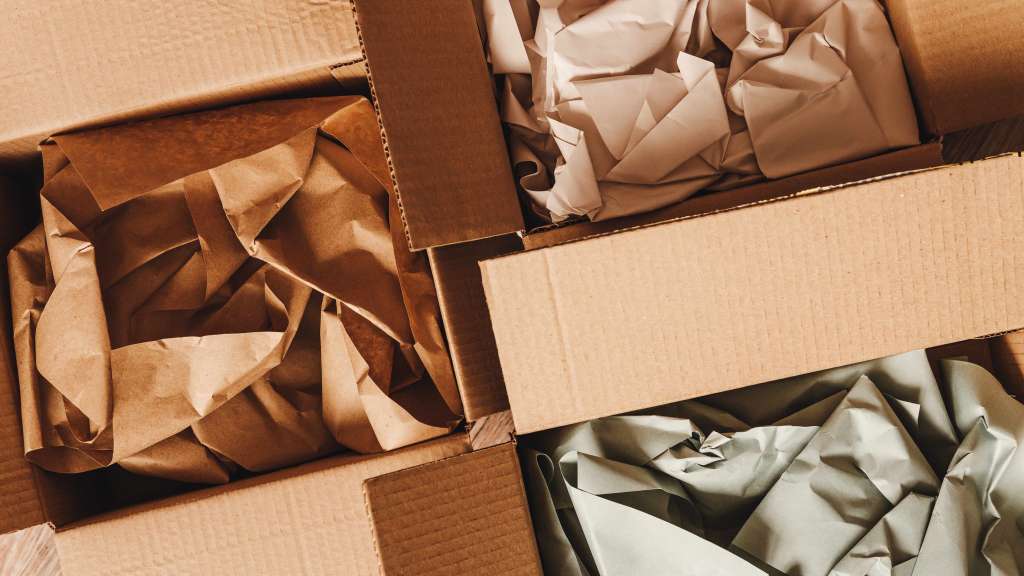Eco-Friendly Packaging to Promote Your Product Image



Summary: Sustainable fashion has moved beyond a niche clientele to gain popularity among a broad base of customers. Brands adopting sustainable fashion methods must necessarily incorporate eco-friendly packaging to bring their efforts in conserving the environment, full circle. Switching to sustainable packaging reduces plastic waste and carbon footprint and boosts brand image.
With more customers addressing the sustainability problem, fashion brands are constantly switching to more eco-friendly approaches. This serves the environment and helps gain the consumer’s trust and improves the brand’s image. Today, customers demand eco-friendly practices and are willing to pay more for sustainable packaging.
But why do you need to switch to eco-friendly packaging? Fashion, in particular, is a major contributor to plastic waste. With an upswing in online shopping, people are buying more clothes. The result: more waste from plastic packaging. In the times of ultra-fast fashion, switching to biodegradable or recyclable packaging is a small step towards easing the plastic burden off of the earth.
What is eco-friendly packaging?
From bags to boxes, plastic has been the number one material used for packaging and delivering apparel and accessories. Several studies have shown that packaging is among the biggest contributors to plastic waste which translates into one-third of consumer waste.
Switching to sustainable packaging means using materials made from easily renewable sources, or packages that can be recycled and reused. Minimizing the use of plastic in apparel packaging would reduce your brand’s carbon footprint and increase its worth.
Why plastic goes against your brand image?

Unlike in the past, customers now associate plastic with ‘cheap’ packaging and are willing to pay a premium for goods packaged in sustainable materials. According to the Global Buying Green Report by Trivium Packaging, 74 percent of consumers are willing to pay extra for eco-friendly packaging. The report which covers customers across South America, Europe, and the US, also found that only 5 percent of consumers associated plastic with ‘premium,’. It means that plastic goes against the premium brand image.
Why you should go eco?
When you are an environmentally friendly brand, you create a positive community response. At a time when designers and brands are walking the extra mile to develop sustainable products, you need to adopt eco-friendly packaging to help your brand stand out. Reduce your brand’s carbon footprint by choosing recyclable or biodegradable packaging material.
A consumer who already trusts your brand would still wish to receive a responsibly packaged product. They would look for biodegradable, non-toxic packages that don’t add to the planet’s sustainability problem.
How you can do it?
Brands looking for sustainable packaging can choose from many packaging solutions. Something recyclable and easy to open works both for the consumer and the brand. Fashion brands should use minimalist, secure packaging for well-presented products that will also be safe in transit.

1. A zero-waste approach
The zero-waste philosophy focuses on redesigning and reusing all products. The PVH-owned Calvin Klein has resolved to adopt completely sustainable and ethically sourced packaging material by 2025. The brand is already saving more than 200 tons of plastic annually.
2. Returnable packaging
Offer your customers the option to return packaging, which can be reused and repackaged. This way, the packaging will never reach landfills. Zara is already reusing hangers, boxes, and bags as part of its sustainability initiatives.
3. Use cardboard
A cardboard box can be used several times before being recycled into a new box. Corrugated cardboard packaging is a versatile alternative to plastic that can be molded into many shapes and sizes. Cardboard is recyclable, will keep your product safe in transit, and can be reused.
4. Compostable packaging

Packaging made from plant-based materials breaks down and provides nutrients to the earth. Brands can use compostable packaging to leverage their product against competitors. Educate your customers about disposing of such packaging correctly (via their composting bin).
5. Plantable packaging
Firms using plantable seed paper products and packaging are the flag bearers in the zero waste approach. Brands such as Pangea Organics offer plant-based packaging for their beauty products. The organic seeds, incorporated into the packaging, can be planted in the soil after the box is soaked in water.
6. Reduce packaging

Alongside sustainable packaging, brands should also aim for packaging reduction in their shipment and supply chains. Packaging in fewer layers helps in eliminating packaging waste. Compact packaging bags unbox an environmentally-conscious brand.
Eco-friendly packaging has become the fashion industry buzzword of late. Brands now choose sustainable practices like recyclable and compostable packaging to box or ship products.
Key takeaways
- Buyers now place their trust in fashion brands that adopt sustainable practices.
- Consumers are willing to pay extra for products that are packaged in sustainable materials.
- Reducing carbon footprint not only helps the environment but also boosts a fashion label’s image in the eye of the consumer. Plastic is no longer premium.
- Brands can adopt a zero-waste approach by reducing packaging sizes and using compostable packaging or reusable bags.
Fashion brands need to collaborate with partners that understand and share their vision. Fashinza can help you take a step toward sustainable packaging by connecting you with reliable manufacturers and suppliers.
Connect with us at Fashinza today for eco-friendly solutions for your label.



















